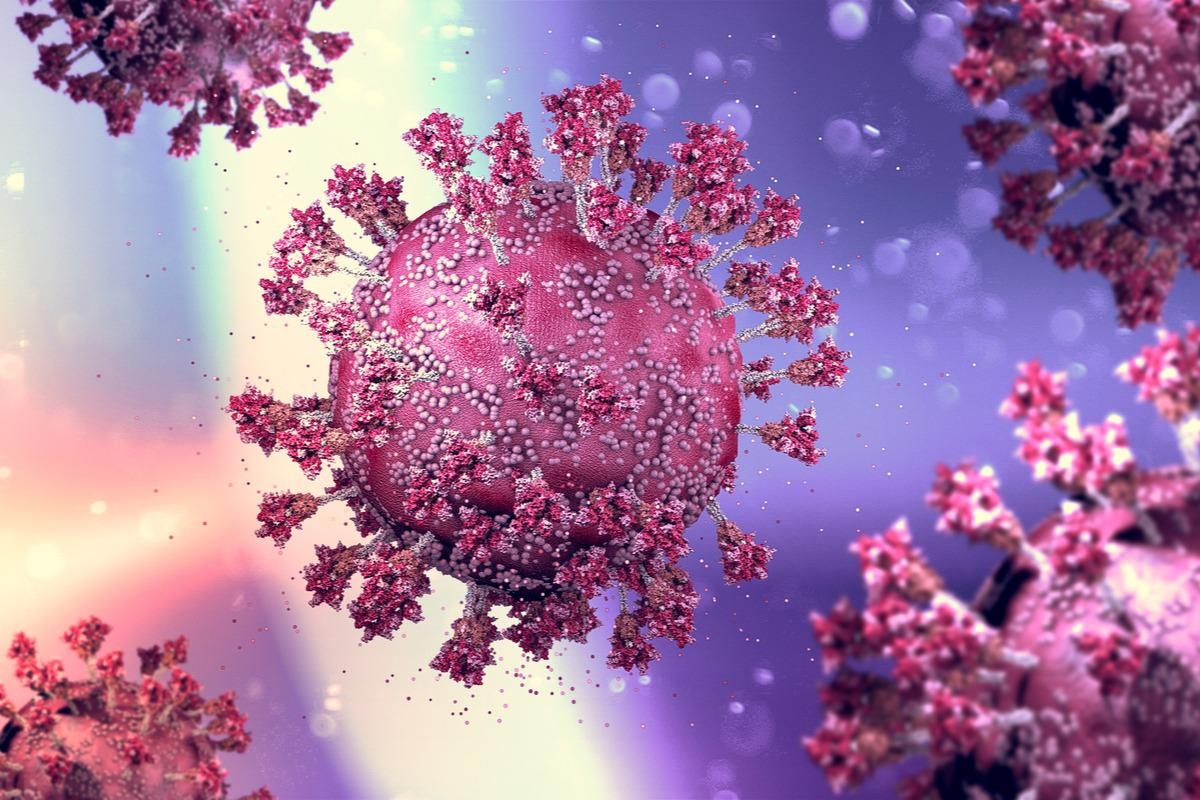In a recent study posted to the bioRxiv* pre-print server, researchers retrieved the first-ever sequenced spike (S) protein structures of the original Wuhan-Hu 1 severe acute respiratory syndrome coronavirus 2 (SARS-CoV-2) strain, the Alpha, Delta, Delta-plus variants, and Omicron sub-variants BA.1 and BA.2 and compared their structural and molecular level variations.
 Study: Molecular dynamics of spike variants in the locked conformation: RBD interfaces, fatty acid binding and furin cleavage sites. Image Credit: Naeblys/Shutterstock
Study: Molecular dynamics of spike variants in the locked conformation: RBD interfaces, fatty acid binding and furin cleavage sites. Image Credit: Naeblys/Shutterstock

 *Important notice: bioRxiv publishes preliminary scientific reports that are not peer-reviewed and, therefore, should not be regarded as conclusive, guide clinical practice/health-related behavior, or treated as established information.
*Important notice: bioRxiv publishes preliminary scientific reports that are not peer-reviewed and, therefore, should not be regarded as conclusive, guide clinical practice/health-related behavior, or treated as established information.
The researchers observed the effect of changes around the free fatty acid (FA) binding site in the closed conformation of the S trimer in particular. Additionally, they observed the effect on the interface between the furin cleavage site (FCS) and the closed conformation of the receptor domains in the S protein. The researchers speculated that the variations in these S loci alter the infectivity of all SARS-CoV-2 variants, especially Omicron.
In one of their previous works, the authors discovered a free fatty acid (FA) binding pocket at the RBD interfaces of the locked SARS-CoV-2 S trimer nesting an essential fatty acid, linoleic acid (LA-). They also demonstrated that the binding of LA in the FA site helped stabilize the locked S conformation. The carboxylate head group of the FA made salt bridges with the R408, and hydrogen-bonding interactions with Q409, throughout the locked conformation of the subunit interfaces.
SARS-CoV-2 S trimer has two monomeric subunits, S1 and S2. Its S1 subunit is primarily responsible for interactions with the hosts and houses the N-terminal domain (NTD) and a receptor-binding domain (RBD) containing the angiotensin-converting enzyme II (ACE II) receptor binding motif (RBM).
About the study
In the present study, researchers improvised their previously developed locked S models missing the first 24 N-terminal domain (NTD) residues and 42 disulfide bonds instead of 45. They modeled the LA-bound, unglycosylated, cryoscopic electron microscopy (cryo-EM) structures of all SARS-CoV-2 variants, which they had built using the original locked S structure of the Wuhan-Hu 1 strain.
The researchers performed over 200 nanosecond equilibrium simulations in three replicates in the presence and absence of bound LAs for the locked S systems of each variant, which were relatively large, containing ~600,000 atoms.
The team simulated each S trimer in 150 mM sodium chloride (NaCl) at a constant temperature, constant pressure (NPT) ensemble at 310 K and pH 7 to generate three sets of velocities for the three replicate production dynamics.
Surface-bound glycans obscure the underlying protein dynamics within the RBD and the complete S; however, the researchers retained all glycosylation sites in these variants for a better resolution for comparing each variant during their short-time molecular simulations (MS).
Study findings
The present study showed differences between directly interacting residues and the intersubunit interactions that hold the S trimer closed and the opening of S RBD in the absence or presence of a FA in the FA site.
Previous simulation studies have shown that greater force is required to open an S RBD in the Wuhan-Hu 1 strain when LA is bound. In other words, initially, LA facilitates a reduction in the frequency of S trimer opening but once bound it likely gets trapped and is sequestered from cell membranes lining the oronasal cavity.
The phenomenon is not counter-productive for SARS-CoV-2; in fact, this benefits the virus by subduing the robust inflammatory that unsequestered LA would have promoted in the upper airways. It is noteworthy that the human body does not synthesize LA; therefore, its availability within membranes entirely depends on its dietary intake and thus varies between individuals.
The equilibrium MS showed that the closed RBD S interface was less tightly packed in the Omicron sub-variants than Wuhan-Hu 1 S, indicating that this subunit interface readily dissociates to open.
Due to mutations at the closed RBD interface in the Omicron sub-variants, they tend to frequently have an open RBD, which translates to more frequent ACEII interactions and increased infectivity. Further, this would imply that Omicron sub-variants might be less efficient in sequestering LA from cell membranes of the oronasal cavity.
The fact that Omicron infections elicit more cold-like symptoms than previous variants further supported the sparing effect on LA-.
Furthermore, root mean square fluctuation (RMSF) data suggested that LA- had a weakly stabilizing effect on fluctuations at the FCS in the Wuhan-Hu1 and the Alpha variant S protein. However, the same was not true for the S trimers of Delta, Delta plus, or Omicron variants. Conversely, bound LA- might have increased the fluctuations for Omicron BA.1, also influencing its rate of furin cleavage. These findings elucidated why Omicron BA.1 infections led to less severe disease outcomes compared to the Alpha or Delta variants in vaccinated populations.
Conclusions
Overall, LA sequestration may be further hampered in Omicron, especially BA.2 sub-variant due to a substitution at the dominating carboxylate interacting residue R408 in Wuhan-Hu1 for a serine (S405). Subsequently, simulations reveal enhanced LA- motility within the FA binding site of Omicron BA.2, compared to all the other variants.
The presence of serine amino acid at a similar position as R408 might also be compromising the binding of some neutralizing antibodies. Together, these factors contributed to the observed increased infectivity, altered symptoms, and enhanced immune evasion of Omicron BA.2.

 *Important notice: bioRxiv publishes preliminary scientific reports that are not peer-reviewed and, therefore, should not be regarded as conclusive, guide clinical practice/health-related behavior, or treated as established information.
*Important notice: bioRxiv publishes preliminary scientific reports that are not peer-reviewed and, therefore, should not be regarded as conclusive, guide clinical practice/health-related behavior, or treated as established information.